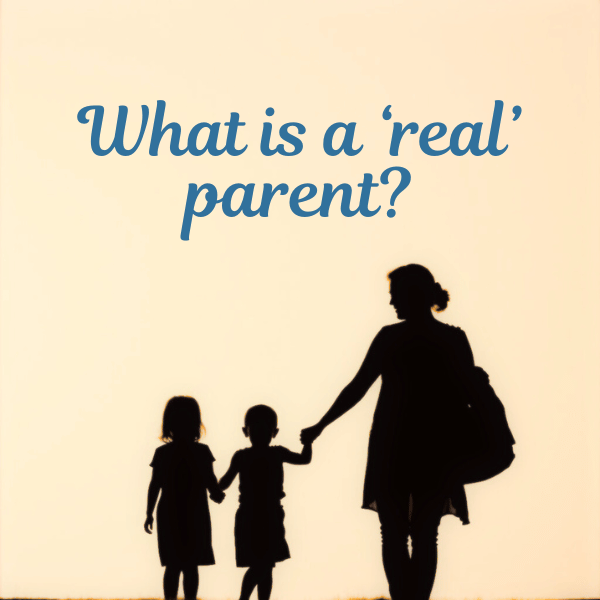Record keeping, incorrect data and responsibility
Since 1991, anyone having donor conception treatment at a UK clinic will have the details of that treatment recorded, including information about the donor and any other children conceived through the same donor. Those records are given to and held securely by the Human Fertilisation and Embryology Authority (HFEA) and parents are provided with certain permissible details about the donor at the time of treatment and can ask for additional details after a child has been born. Their children, when they reach 18, are able to apply to the HFEA for more information about the donor and any half siblings. If they were conceived after 2005, they may also be able to get contact details for the donor.
Separate to this route to information, donor conceived individuals can also use home DNA testing sites to find genetic relatives – the donor or half siblings – and many of them do this, particularly if they were conceived before 2005 and the information that can be shared by the HFEA is more minimal.
The importance of records
The HFEA is held up as a highly respected model internationally and we are lucky to have a regulator and secure records, as well as a clear process for accessing information. The information that gets shared by the clinic or the HFEA is often hugely significant for families. Parents use the details to support their child in creating a more complete sense of their background and identity. Donor conceived people can integrate the information they receive to help them understand more about who they are, perhaps related to their ethnicity or what the donor has shared about themselves in terms of physical characteristics, interests or skills. Similarly, the number of half siblings (one of the pieces of information that can be shared by the HFEA) can help people get a sense of how wide that group is and who they might connect with in the future.
Inconsistencies
But what happens when the information that parents and donor conceived people have been given by the clinic or the HFEA doesn’t match with what a DNA testing site brings up?
A recent Channel 4 investigation When the Records Don’t Match the DNA: A Crisis of Trust in Donor‑Conceived Identity brought to light concerns about the integrity of the UK’s donor conception records. The documentary revealed that a small number of donor conceived people were given details by the HFEA that contradicted DNA evidence and genealogical databases. To put it another way, the HFEA data was wrong.
For the individuals affected, the consequences are not merely academic. The sense of identity, family, medical history and psychological stability can be profoundly shaken when some foundational elements of the family story are found to be incorrect. For example, there was a case where half siblings believed to be biologically related turned out not to match genetically in commercial DNA databases.
Beyond the personal trauma, the controversy also calls into question institutional trust: if a regulator’s records could be unreliable, how should donor conceived people, their families and the public regard those records?
How did this happen?
There is a significant challenge in ensuring the integrity and accuracy of data (and this doesn’t just affect the HFEA). Historically, donor records were handwritten, stored in physical files, and transferred manually. Over the decades, clinics have closed, merged, changed ownership, or transferred archival material to successor institutions. As part of their response to the investigation, the HFEA noted that in some cases closed clinics’ records have been passed on to others, and verifying original donor codes required reconstructing fragmented logs or contacting multiple archives. It’s not surprising that under those circumstances the final result wasn’t always 100% accurate.
Moreover, before the digital age, standardisation of donor codes, systematic auditing, and cross‑clinic data validation were less rigorous or less enforced. The hand‑written nature of the record keeping opened the possibility of transcription errors, mislabelling and inconsistent donor identifiers, all potentially introducing mistakes.
Understanding all that makes it clear that the likelihood that there might be errors in the data is high. Over time, we would hope that errors would reduce in number, as more checks and balances are introduced (double witnessing key data, for example) and digitalisation improves standardisation. However, we know things may never be perfect.
Going forward
The situation wasn’t completely unknown; DC Network and others had been aware of discrepancies as over the years families had reported getting inconsistent information from different sources. But this Channel 4 investigation really brought things to light and helped clarify the impact on donor conceived people and families.
It reminded us, and should remind the HFEA and the clinics, to make sure that we don’t claim things as absolutely certain when they aren’t. Historic data should be shared with a caveat that there can be errors. It should be stressed that they are rare, but it’s essential that honesty and transparency are given due weight when sharing such important information.
The trouble is, that opens up another question; how to convey trust and responsibility whilst also recognising potential flaws and errors? Finding a way to hold both messages for parents, donors and donor conceived people, without undermining trust or causing unnecessary anxiety, might require some thought and that applies to DC Network as much as to the HFEA, the clinics and other related organisations.
Nina Barnsley
1 October 2025
Additional info added 21st October 2025
I wanted to add a mention of the important work done by the Donor Conceived Register at Liverpool Women’s Hospital. This is a voluntary matching service for donors and donor conceived people pre 1991, enabling connections to be confirmed via DNA testing (provided by the accredited laboratory at King’s College London) without having to go to a commercial home testing site.
For those who donated or were conceived pre 1991 this can be a very good option, offering the accuracy of a DNA test but with a certain degree of safety and privacy with regard to data and information. And, of course, the more people in their register the more helpful the service becomes.
More information about the Donor Conceived Register for those conceived in the UK per 1991
https://www.uhliverpool.nhs.uk/services/service-finder/donor-conceived-register
Further reading
https://www.channel4.com/news/exclusive-wrong-genetic-info-given-to-people-born-by-sperm-donation
https://www.progress.org.uk/some-donor-information-held-by-the-hfea-is-incorrect/





